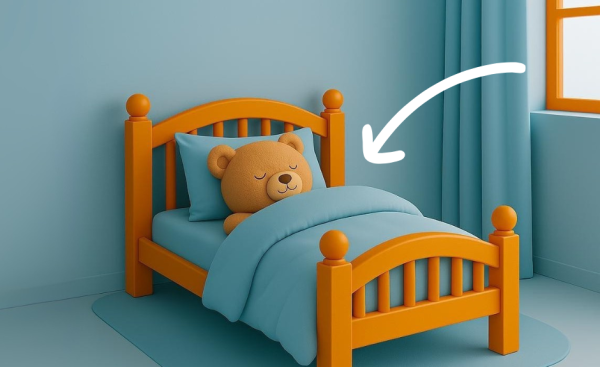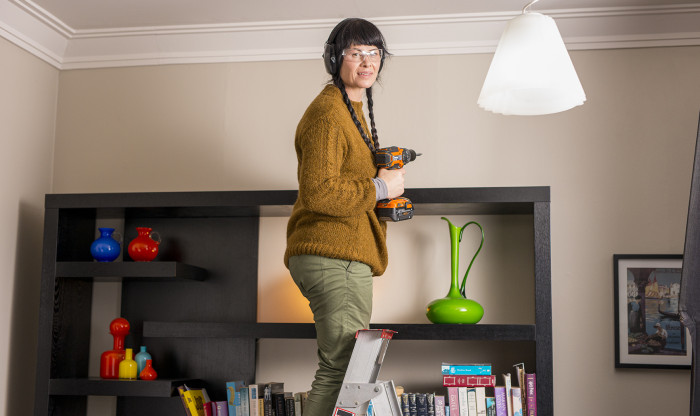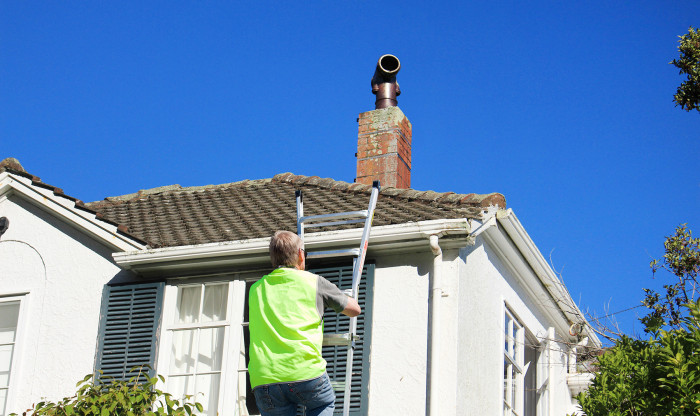Bedrooms can be dangerous in a quake
We spend a lot of time in our bedrooms, mostly asleep. We’re all more vulnerable while we're asleep, children especially so.
Whether you’re setting up your nursery for your impending arrival, or you want to make your child’s room as safe as possible, read on. This guide lists the potential hazards in a child’s room in a quake, as well as actions you can take to reduce the risk posed by those hazards.
Make your child’s sleeping area safer
Position beds and cots away from windows
Earthquakes can break windows causing glass to fall into your house. If a bed or cot is underneath a window this will pose a real danger.
Pick a spot for your child’s sleeping area that is away from where falling glass could injure them. The best place is usually against an internal wall.
Fix wheels or castors on beds
If your child’s bed or cot has wheels or castors, it could move around in the shaking caused by an earthquake. Make sure the castors are locked to help prevent the cot or bed moving.
If the bed has castors that don’t have locks, you could tape them or put a soft pad under the wheel. You could also replace the wheels with stationary feet.
Keep the wall above the cot or bed clear
That family portrait might look perfect above your baby’s cot, but it risks injuring them if it falls in an earthquake.
Fix pictures away from where they can fall on your child while they are sleeping. Avoid putting shelves that can hold heavy items above sleeping areas too.

Fix big items securely to the wall
Sleeping areas don’t pose the only risk in a child’s room. Unsecured heavy furniture or pictures and mirrors are likely to fall in a strong earthquake.
Anchor heavy and tall furniture
Tall or heavy furniture like bookcases and drawers, or even TVs, can fall during an earthquake — or if an adventurous toddler tries to climb them. Securing them to wall studs is a simple DIY job. You can do this using either brackets or adhesive straps.
Visit our securing heavy furniture page for detailed instructions on how to attach brackets, or adhesive straps.
Use secure hooks to hang pictures on the wall
Decorating your child’s room is a fun way to make it feel special and personal. If you do hang pictures or mirrors on the wall, use secure fastenings to prevent them becoming falling hazards in an earthquake.
Closed hooks or picture-hanging systems work best for most items. You can also use adhesive strips (like Command™), for lightweight items.
Avoid single nails or thumbtacks, they aren’t secure during shaking.
Add latches to drawers and cupboards
Keeping curious little hands out of cupboards and drawers can help reduce risk in an earthquake too. Drawers and cupboards can fly open and objects can fall out in significant shaking. Secure them shut with latches to get back a little peace of mind.

Around the house
Protecting your child’s room is a great first step. Once that’s done, take a look around your home and check for other earthquake hazards.
Fixing heavy objects, securing pictures to the wall, and latching cupboards shut are useful actions anywhere in your home. Walk around and room by room make a note of the hazards you need fix. Don’t forget the fridge!
Make Your Place Quake Safe - Nurseries and Children's Rooms
These ones are a bit older now, but when they were younger there was a ton
of stuff we had to do to make sure their rooms would be safer in an earthquake.
Babies can’t drop, cover and hold like us older ones can.
So we need to take a good look at their
environment and make sure it’s as safe as possible.
We can start with baby’s cot or your child’s bed.
Move it away from any windows or next to an internal wall, if you can.
Next thing to check is if there’s any tall or heavy objects that could topple over.
Secure any tall or heavy furniture to wall studs using brackets or straps
and we won’t just do this for this room, we’ll do it across the whole house.
We’ve made a whole video on how to do this, so go and check it out.
Next thing is to make sure that you’re not placing
any pictures or any shelves just above baby’s cot or your child’s bed.
And make sure if you do place anything on the wall that you’re using a proper hook,
not just a single nail.
There are other things you can do too to make sure your place is as safe as possible for little ones.
We made a video with quick and easy steps you can take, just to make sure that stuff gets done.
Sssh – she’s asleep.
Sorry love.
Next steps

Check out our guidance on how to secure large objects in your home.

An old chimney can pose a serious risk in an earthquake.